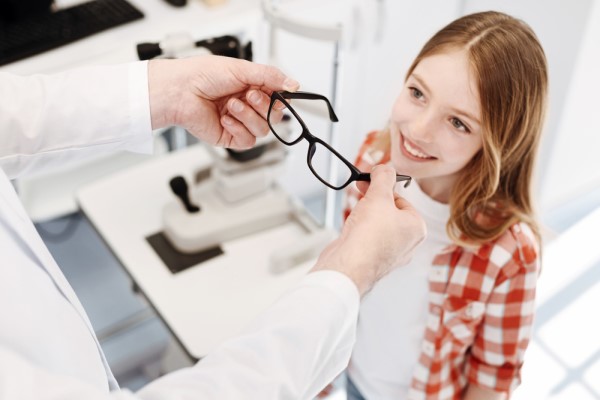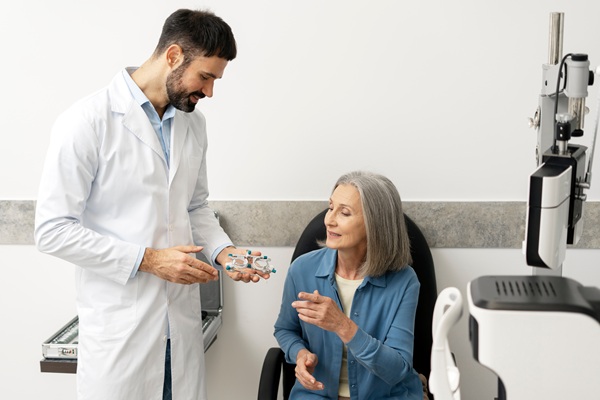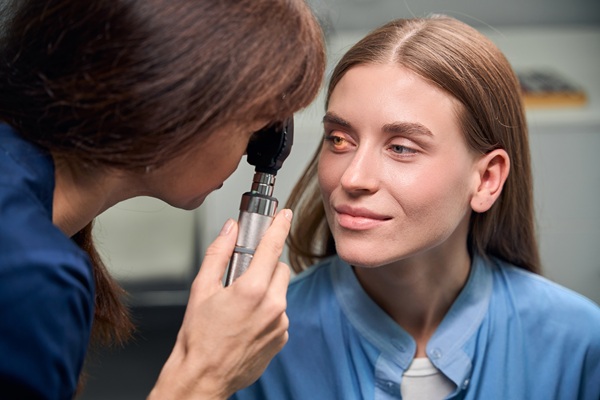Common Pediatric Eye Care Services

Pediatric eye care services help diagnose and address issues that might affect your child’s vision. How well a child can see impacts their learning ability, since about 80% of the learning process is visual. Children mostly learn about the world around them by observing their surroundings.
Pediatric eye care helps ensure that visual problems are not hindering your child. Eye exams should be performed as the child reaches different stages in their development. The American Optometric Association recommends taking your child in for their first eye examination by the time that they are six months old, when they reach the three-year mark, when they start school, and every two years throughout the rest of their childhood.
A child might need to get their vision evaluated more frequently if they have risk factors like a family history of eye defects, being born prematurely, or issues like a lazy eye. Children who need to have their vision corrected should see an optometrist at least once a year. Children's eyes grow rapidly, so their prescription might no longer adequately correct their vision after a year.
Essential pediatric eye care services that your child needs
Let us take a close look at the different eye care services that an optometrist might recommend for a child.
Infant eye exam (infants younger than 24 months)
A baby's eyes develop gradually for the first few months of their life. They must learn how to move their eyes and use them together to form clear pictures. The child’s brain also needs to learn how to process all the visual information. The development of a child’s eyesight serves as the foundation for hand-eye coordination and motor development skills, like crawling and walking.
A child’s first eye examination should occur when they are about six months old. During this examination, the optometrist will evaluate the child’s vision to ensure that they can see correctly and will detect any conditions that could negatively affect their vision or eye health. The optometrist might recommend follow-up examinations if the child has risk factors for developing eye problems.
Preschool eye examination
This exam typically takes place around ages two to five. It is performed to diagnose and treat any developing eye problems that are hindering a child’s vision and limiting the development of their motor skills and learning abilities.
The optometrist looks for issues like crossed eyes and lazy eyes at this stage. These disorders are generally easier to treat when a child is young.
Signs that a child might have vision issues at this stage include sitting close to the TV or reading material, frequently rubbing their eyes, avoiding activities like coloring books, or squinting frequently. Addressing these issues early sets up the child for success as they start academics.
School-age eye examination
These exams are performed on children from the ages of six to 18. Children with undetected vision issues often suffer academically, athletically, personally, and socially. A child's struggle with their academic course load or extracurricular activities might signify a vision problem. These exams help diagnose any existing issues, so they do not impact the child’s academic and athletic development.
Children who struggle with vision-intensive tasks like teaming their eyes, reading, or coordinating their eyes with their hands sometimes exhibit behavioral problems due to being frustrated with their inability to do things that seem to come naturally for everyone else. Other signs that a child in this age bracket might be struggling with their vision include:
- Not being able to focus on tasks
- Frequent blinking
- Tilting their head to one side
- Avoiding anything that requires reading
- Double vision
- Poor reading comprehension
Common eye disorders that affect children
A child’s vision can be affected by things like how their brain and eyes work together, existing medical conditions, and the shape of their eyeballs. Issues that pediatric eye care often diagnose and treat include:
- Strabismus: This disorder leads to a child’s eyes not aligning correctly, and it is also known as crossed eyes
- Amblyopia: This condition is commonly known as a lazy eye, and it leads to poor vision in one eye; children who were born with low birth weight or prematurely are more likely to develop the condition
- Myopia: Commonly known as nearsightedness, this condition can be corrected with prescription contacts or glasses
- Hyperopia: This leads to poor vision of up-close objects, and it can be corrected with glasses or contacts
- Astigmatism: This leads to blurred vision at any distance, and it can be corrected with glasses
Safeguard your child’s vision
Give us a call or drop by our Dallas clinic to get pediatric eye care services for your child.
Request an appointment here: https://www.texasoptical.net or call Texas Optical at (214) 771-7333 for an appointment in our Dallas office.
Check out what others are saying about our services on Yelp: Read our Yelp reviews.
Recent Posts
Red, itchy eyes can affect your everyday comfort and reduce overall well-being. It is important to seek effective vision care from the first sign of irritation. Proper attention to symptoms, underlying causes, and healthy habits ensures stronger long-term eye health and greater day-to-day clarity. Redness and itchiness often stem from several common triggers. These include: Allergic…
New spots or shadows drifting across vision can be unsettling, and sudden changes sometimes require emergency eye care to protect long-term sight. Many floaters are harmless, but others signal serious problems with the retina or internal eye structures. Understanding when floaters are normal and when they point to a true eye emergency helps patients act…
Glaucoma treatment plays a vital role in preserving vision and protecting the optic nerve from further damage. Many patients rely on daily eye drops to manage intraocular pressure, but these medications can sometimes come with side effects. Understanding how to recognize, minimize, and communicate about these effects supports long-term success and comfort with treatment. While…
Progressive lenses offer clear vision at near, arm's length, and far distances without the visible lines found in bifocals. They provide a smooth change in power from top to bottom, which means the eyes can focus comfortably throughout the day. With the right fit and guidance from an optometrist, progressive lenses help reduce eye strain…


